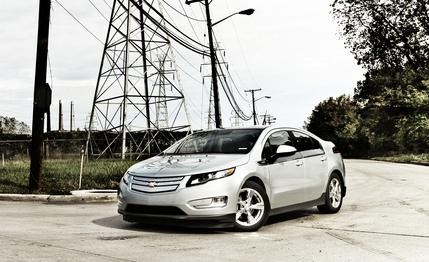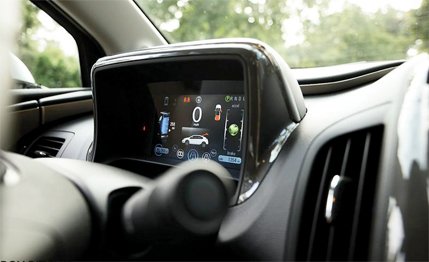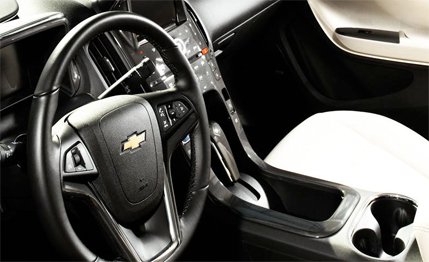
 Road Test
Road Test
Mass-produced electric cars are finally here. And, this time around, it appears they’re here to stay.
It’s irrelevant that, depending on how their electricity is produced, electric vehicles don’t come very close to living up to the zero-emission label they often receive. Also irrelevant is the point that battery packs with enough capacity to power a vehicle for any significant range are prohibitively expensive today. That’s because the trump card already has been played: It’s called government intervention. The Obama administration has started to unleash part of a planned $69 billion to thousands of clean-energy companies—through tax credits, loans, and grants—as well as to consumers, with a $7500 federal tax break for buying a car that has at least 16 kilowatt-hours (kWh) of energy stored in a battery pack. Do you think it’s a coincidence that the Chevrolet Volt’s lithium-ion pack contains exactly that amount?
But beyond the commonality of large battery packs, the Volt sets itself apart from the Nissan Leaf and the forthcoming EV crowd: It also has a gas engine that can step in to extend the Volt’s range when the battery’s energy is depleted.


This is why GM calls the Volt an “extended-range electric vehicle,” and the dual-power-source arrangement makes a lot of sense at a time when there’s precious little charging infrastructure. Currently, 48 of 50 states have fewer than 10 charging stations, and even California’s relative abundance of 422 pales in comparison to its roughly 10,400 gas stations. In other words, it’s going to be some time before charging while at work or out on the town becomes the norm; for now, EVs’ batteries will be replenished largely at home. And with maximum ranges in the 100-mile neighborhood, good luck with any long- or even moderate-distance travel. And forget about having a pure electric as your only vehicle.
What if your family in California needs you to visit? While a pure EV—needing long recharging sessions every 70 miles or so—will transport you back to the era of the monthlong road trip, the Volt could easily drive across the country on gas when there’s no time or electricity available for recharging. Closer to home, if this writer had been driving a Leaf instead of a Volt, I would have had to deal a blow of rejection to a five-year-old nephew whose birthday party was 60 miles distant, due to the lack of a place to charge while there. Do you think he would have understood?
And although the Volt has both a gas engine and two electric motors—one primarily to power the wheels and a second to generate electricity from the gas engine—it is unlike any gas-electric hybrid on the road today: If charged sufficiently, it can operate continuously, at any speed, as an EV, without ever needing to switch on the gas engine. Of course, this raises a whole new set of questions, ranging from: “Won’t the fuel go bad at some point?” and “Isn’t it beneficial for longevity’s sake to start the engine once in a while?” to “Hey, boss, when can we start expensing our home electricity bills?”


This is but a glimpse into the Volt’s complexity and why, after six weeks of electric-only operation, the Volt will start to ask the driver via the instrument panel if it’s okay to switch on the gas engine for a bit to keep it fresh. And the Volt makes sure to burn through a tank of fuel each year to ensure it never gets stale. Plus, in order to extend the life of the very expensive battery—sources say it costs as much as $10,000; GM won’t comment—it uses only about 9 of its 16 kWh for propulsion and requires its own coolant circuit in order to heat or cool the 288 cells to keep them in the optimal temperature range (32° to 90°F). There’s yet another circuit to cool the electric motors. Things get even more complex in the powertrain, more so than we were initially led to believe [see download].
Behind the wheel, however, it all operates seamlessly. Hit the glowing blue start button, and the seven-inch LCD-screen instrument panel, like the one used for the standard navigation, comes to life. It presents an estimated electric-only range, a gas range, and a total of the two. To the right is a graphic that provides driving feedback; the Volt is operating most efficiently when the spinning, green ball of leaves stays in the middle. Hit the gas too hard, and the ball elevates, shrinks, and turns yellow. Go for too much brake, and the ball does the opposite, slinging downward because energy that could have otherwise been recaptured regeneratively is being wasted. It’s a very straightforward and easy-to-follow setup. The center screen above the array of touch-sensitive controls on the dash keeps track of electrically and gas-driven miles separately, displays fuel economy (more on that later), and rates the efficiency of your driving.


Whether or not the gas engine is running, the Volt always has an EV-like demeanor. Which is to say there’s almost no waiting—and no downshifting—as it responds swiftly to throttle inputs. Acceleration is one continuous ooze of thrust—sort-of CVT-like, only without the engine drone. In fact, although the Volt isn’t slow compared with its peers—its 9.2-second 0-to-60-mph time beats both the Leaf and the Toyota Prius by 0.8 second—it feels quicker than the numbers suggest because, off the line, no matter what the driver does, the electric motor’s 273 pound-feet of torque rolls out modestly and averts wheelspin. The immediacy you feel shows up better in the 3.7-second 30-to-50-mph time, which is just a couple of ticks slower than a V-6 Mazda 6.
There’s not much noise, either. In EV mode, the cabin is as quiet as a Lexus RX350’s at 70 mph, and even with the engine running, it matches the Prius at 72 dBA. The point at which the engine fires is barely discernible—the reconfiguring of the digital dash when it transitions is far more obvious. When the driver hammers the Volt in range-extending mode, the engine revs more assertively but is never harsh or intrusive.
Beyond its impressive powertrain, the Volt drives surprisingly well, with a reassuringly steady suspension. The electric power steering is light but direct on-center, adding weight in proportion to angle. It’s neither totally natural nor terribly off-putting. Ditto the regenerative brakes, which work well at moderate levels, though they’ll never match the feel of a good ol’ vacuum booster. At low speeds and during near-limit applications, the brakes can feel disconnected and very nonlinear.